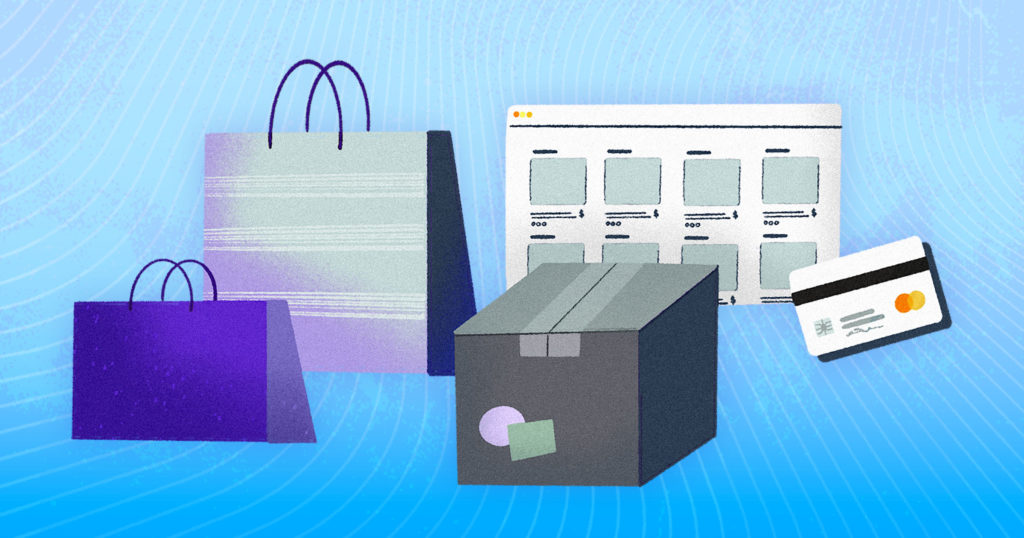What are the greatest challenges B2B merchants are facing right now? And what are the most important metrics they should be watching?
In this article, we’ll tap into the expertise of four B2B ecommerce experts to answer these questions and explore how BigCommerce and other platform and application providers support merchants in responding to these market forces.
Top B2B merchant challenges
Today, B2B ecommerce merchants face many challenges that must be addressed if they hope to reach their full revenue-generating potential. Here are our experts’ top picks:
Making the B2B buying experience more B2C-esque
B2B buying trends are changing. Decades ago, the experience didn’t matter much as B2B ecommerce was primarily driven by SKUs and shopping lists. Many of today’s B2B buyers are millennials and Gen Zs and are used to the B2C online experience; they expect a similar experience for their B2B purchasing.
On the one hand, this is good for B2B merchants as it allows them to take advantage of strategies such as merchandising, enhanced search, and personalization. But making the experience more B2C-esque doesn’t stop at functionality; it should extend to rich content and product descriptions. Just sharing the “bare-bones” is no longer good enough.
By enhancing their product data, B2B merchants can ensure that their customers make more informed decisions, compare products, and buy higher-margin items. Ultimately, it comes down to investment: the more a merchant invests in their ecommerce business, the higher their ROI will be.
Antiquated quoting workflows
Many B2B merchants still use antiquated methods to process quote requests, e.g., phone, fax, and email, leading to poor buyer experiences and costly inefficiencies. Bringing the quoting process online with a tool like B2BNinja significantly improves buyer satisfaction and retention and boosts revenue. It also frees merchants’ sales teams to focus on selling, not paperwork.
With BigCommerce’s B2B functionality, merchants can offer custom prices easily. For example, you can give one long-term, high-volume purchaser 20% off their order, another loyal customer 12% off, and a 10% discount to a new group of customers.
Meeting B2B buyers where they shop
B2B buyers expect their suppliers to meet them where they shop, whether in person, over the phone, or through a self-service online portal. B2B merchants who meet these expectations are seeing greater customer retention, more sales, and better overall buyer satisfaction. Key to this success is utilizing a tool like BundleB2B to create buyer roles that allow buyers to move their purchase approval workflows online.
Accurately calculating freight packaging
Some B2B merchants specialize in items requiring larger packaging, such as warehouse shelving systems or industrial machinery – often processing hundreds of items as part of one order. From a freight standpoint, the challenge is ensuring all items are shipped correctly and promptly and arrive at their destination in good condition.
Tools like ShipperHQ take the guesswork out of freight calculations, and they can even recommend which sizes of boxes or types of packaging are best for different items.
Supply chain woes
Supply chain backlogs and inefficiencies continue to plague merchants’ operations and can manifest in many ways, for example:
- Some merchants don’t have a way to manage order backlogs through backorders.
- Often, default authorization/capture charges customers on checkout instead of on the shipment of products. That won’t make your customer happy if your product is out of stock and you don’t expect it to be restocked for three months!
The good news is that merchants can facilitate their payment flows using MINIBC backorders or custom Auth/Capture. These tools allow them to authorize the amount on checkout and capture the total amount on shipping or a partial amount on checkout and the remainder on shipment. Many merchants also offer subscriptions using MINIBC, which helps them better forecast their volumes and manage stock expectations.
Metrics for the modern B2B merchant
Next, let’s look at the metrics our experts believe modern B2B merchants should keep a close eye on:
Close rate
The main metrics and KPIs to measure are broadly the same for B2B as they are for B2C, with a few additions. Apart from bounce rate, AOV, cart abandonment rate, conversion rate, cost of acquisition, and LTV (which should be KPIs for all ecommerce websites) B2B merchants should also measure the close rate.
Close rate measures how many leads become customers, although this will depend on how the merchant’s website is set up. B2B merchants should also monitor their customer churn rate/customer retention rate ratios to understand how many customers are and aren’t coming back. After all, successful B2B is about winning repeat business.
Conversion rates
B2B merchants must closely monitor their conversion rates and ensure they’re getting a bang for their marketing buck. For example, say you start the year with a website conversion rate of 1% and are spending $5,000 a month on marketing. After improving your website’s design, ease of use, and pricing, your conversion rate increases to 3%.
That $5,000 you’re spending on marketing is delivering a far more impressive ROI – instead of one out of a hundred conversions, you’re getting three out of a hundred. So, the conversion rate is king.
Fulfillment efficiencies
Another essential metric to monitor closely is the time it takes for orders to reach your customers from when they place their orders. If that metric isn’t where you want it to be, ask yourself what you can do to create efficiencies to shorten those gaps. Also, look at opportunities to improve efficiencies on the backend order processing side to increase throughput without necessarily increasing costs.
For example, think of a merchant shipping 100-150 orders daily and growing fast. However, they still have multiple employees in their shipping department assigned to simply printing labels. They implemented ShipStation in that environment and cut the time from when a shipping department worker handled packages to when they were on the stack ready to go out to UPS by one-third. They could double the daily orders they processed without increasing staff costs.
Meeting the B2B challenges of the future
B2B ecommerce is constantly changing, and merchants must constantly evolve their tactics to stay ahead of their competition. Constant experimentation is risky, however; new apps, collaborators, and code can wreak havoc on your site if something goes wrong. The best method of securing the data your store relies on is an account-level backup and recovery solution, such as Rewind Backups for BigCommerce.
With your business-critical data secured, your team can experiment and grow your store with the confidence that no mistake is unfixable.
Contributors
Matt Reader, Madfish Agency
As the Owner and Chief Fish at Madfish Solutions, Matt started MadFish Solutions with one purpose: to change people’s lives through innovative technology solutions that focus on business growth. Madfish’s web, e-commerce, and digital marketing solutions have changed dozens of people’s businesses so that they keep coming back for more.
Luigi Moccia, Calashock
Luigi is the Founder and CEO of Calashock, one of the first BigCommerce agencies in Europe, having worked with the platform since 2009. But Luigi’s ecommerce experience goes back to before BigCommerce, with a family-owned online shop on Actinic. Moving from his own store to consultation and implementation, Calashock was born to share his expertise and help other merchants achieve their full ecommerce potential.
Chaniel Laidet, BigCommerce
Chaniel Laidet is in her third year at BigCommerce, where she supports BigCommerce Marketing Technology and Site Tools partnerships. Her role includes ensuring merchants are educated and enabled to adopt best-in-class marketplace solutions.
Isaiah Bollinger, Trellis
Isaiah Bollinger is the CEO of Trellis, a full-service ecommerce agency. He founded Trellis to provide a better service to small business owners to help them grow digitally. Trellis focuses on data-driven strategies to drive traffic, engagement, and conversion for industry-leading brands.
Ecommerce experts at Be a Part Of
Be a Part Of is a company rooted in the entrepreneurial spirit — of building through a passion for technology and commerce. For over 17 years, the company has earned a reputation for solving problems, driving business growth, and creating limitless possibilities for the merchants they work with.



